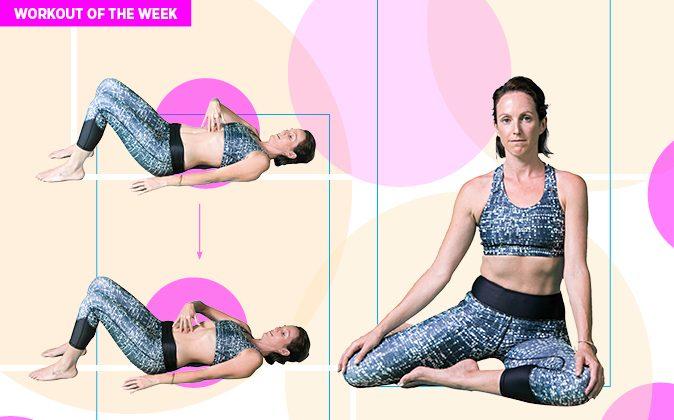Congratulations: You are a new mom, and along with the new title comes a different body. Your postnatal body needs lots of TLC, particularly your abdominal muscles, which have experienced extensive change over the course of your pregnancy and during childbirth.
To make room for your growing baby, your abdominals had to separate and divide—this is called diastasis recti. All women will have some degree of diastasis recti after pregnancy and your first physical hurdle as a new mom is to heal and close the separation.
Mastering how to assess your abdominal separation is key to tracking your progress and the healing process. You should continue to assess your abdominals until you have healed your diastasis—this might take six weeks, or it might take six months or more. Just keeping working on it!
We measure diastasis three ways—length, width, and depth. Learning how to self assess your abs is really important, as it helps track your success and works as an excellent guide to ensure that you are progressing at the right pace and are ready for the next phase of your recovery exercises.

Here is how to perform a self-assessment of your diastasis:
Check the Skin
Look in the mirror—what is the appearance of the skin? Is there mottling (which looks like crepe paper)? Mottling is an indicator that you have diastasis recti.
Check the Linea Alba with Head Down
- Safely get down on to your back by going down to your side first, then rolling over onto your back. Bend your knees and let your head rest on the floor.
- Begin to feel down the midline of the body—this is called the linea alba. For some women it may have darkened during pregnancy. Gently push along the midline of your body with your index and middle fingers together. Begin at the top of your midsection and follow all the way down to below your belly button.
- What is the integrity of the connective tissue? Is there tone and resistance or can you push your fingers through?
Check the Linea Alba with Head Up
- Starting with your two fingers, push into the linea alba just below the sternum. Tuck your chin and lift your head a little off the ground. Do not try to engage your abdominals—leave them relaxed.
- Can you push your fingers through? Is there room to add a finger or two? If so, repeat the exercise with additional fingers.
- Move down the body, repeating the exercise above for each of the following sections—a little above the belly button, on the belly button, and just below it.
How to Interpret Your Results
- If you can fit less than two fingers, this is considered normal—two fingers or more is considered significant and dysfunctional.
- If your separation is more than two fingers, you should start with seated deep core exercises to target muscles that can safely close the separation.
Exercises to Avoid if You’re Pregnant or Have Diastasis Recti
- No crunching
- No double-leg lifts
- No planking
Ali Handley is a New York-based Pilates instructor, mother of two young children, and founder of BodyLove Pilates, a dedicated online studio with 200+ video workouts for pregnant and postnatal women to ensure they work out smarter, safer, and more effectively during this important time in their lives. BodyLove-Pilates.com


